Japanese knives have been in trend for a few years: they are now everywhere, from supermarkets to concept stores. But these knives are only Japanese in name and are primarily made in China. So what is it about, and why choose a real Japanese knife?
1. Because it is a great art
The first specificity of the traditional Japanese knife is hand forged by a qualified blacksmith (almost) as in the samurai days. It changes everything with a blade that comes out of a mold: the forged steel is much denser, stronger, and overall more powerful.
The shaping of the blade involves different layers of steel. The shape is given with a series of hyper-precise gestures, which form the various bends of the curves, the transitions of thickness, and the subtle angles of each knife style. As a result, the blades are made with a bluffing precision, beyond a tenth of a millimeter.
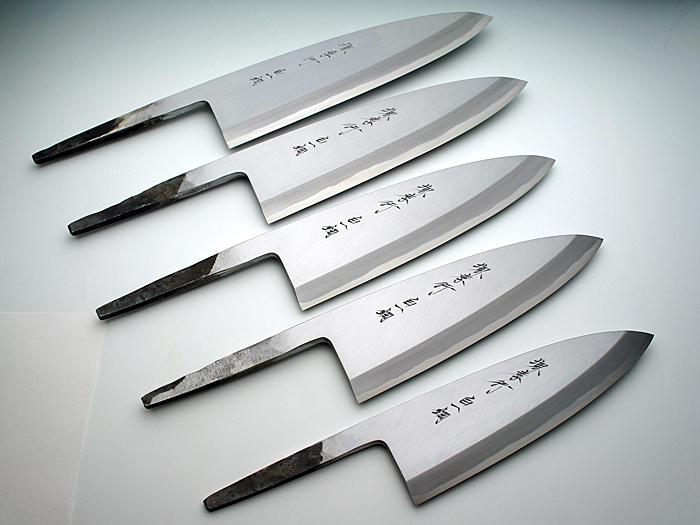
The handle is made of noble woods (magnolia, ebony, etc.) topped with a black or clear buffalo horn ring.
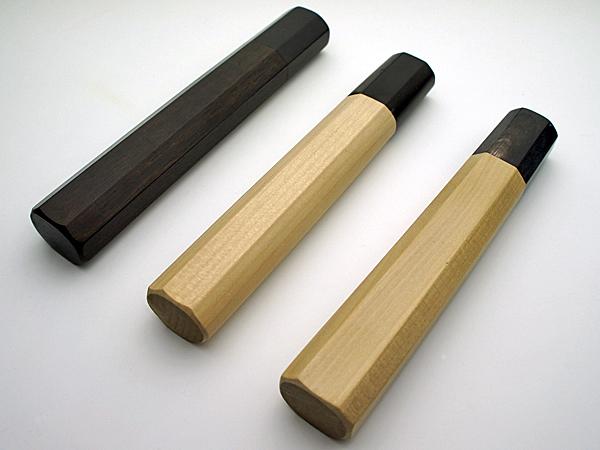
A Japanese knife can be customized; you can choose everything yourself: type of blade, type of steel, the wood of the handle, style of the handle, and the color of the horn. You can even choose to have it engraved with your name.
2. Because it's sharp
It's simple, Japanese knives are probably the sharpest knives in the world for one simple reason: steel uses a very pure mixture of iron and carbon. There are several types:
- Shiroko 白鋼 (or shirogami, "white steel" in English): this is the most common steel, of excellent quality, composed of iron and carbon, making for a very sharp blade.
- Aoko 青鋼 (or Aogami, "blue steel" in English). In addition to iron and carbon, it has a small amount of Harmonium and Tungsten, holding its wire significantly longer than Shiroko.
However, Aoko steel is much more expensive than Shiroko.
In comparison, stainless steel blades, even high-end ones "made in Germany," are much less sharp. Because stainless steel is a material that does not provide a very sharp edge. The main advantage of stainless steel is that it is water-resistant and maintenance-free.
To keep the perfect edge of these so-called "carbon" blades, you need to sharpen them from time to time on sharpening stones (whetstones), which look like this:
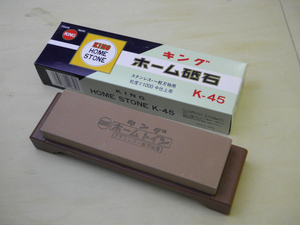
These stones are like sandpaper but much more refined, with grits between 500 (scouring) and 8000 (samurai finish!). Sharpening is relatively straightforward: you have to moisten the stone, then move back and forth with a slight angle to get the blade's edge. If you get the hang of it, it's easy to get a perfect cutting edge.
How do you know if it's sharp enough? Try slicing a sheet of newspaper, holding it in one hand and the knife in the other, if the blade cuts cleanly without tearing the paper you win!
With such a sharp blade, it's easy to do some pretty amazing things, like slicing vegetables so thin they're transparent. A good knife changes your life in the kitchen and makes you more efficient and faster.
Of course, once sharpened, these blades are very dangerous! So, you have to be careful to keep them out of reach of curious people and children and store them in their wooden case, the Saya (鞘). You have to be careful in the kitchen, especially when slicing, having your fingers tucked in to guide the knife. You won't even feel it if you cut yourself, and your cut will be clean as a scalpel.
3. Because there is something for everyone
There are many shapes and styles of knives, each with its use in Japanese cooking. In general, the angle of the blade is on one side only. The most common shapes are the following:
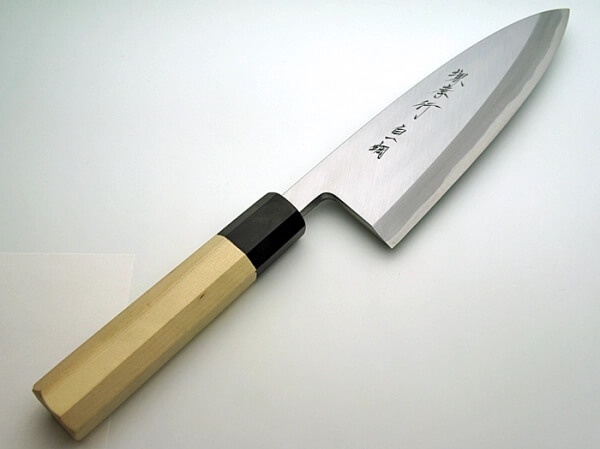
Deba (出刃) knife, wide and powerful, for filleting fish
→ Buy Deba (出刃) knives on Yahoo Auctions
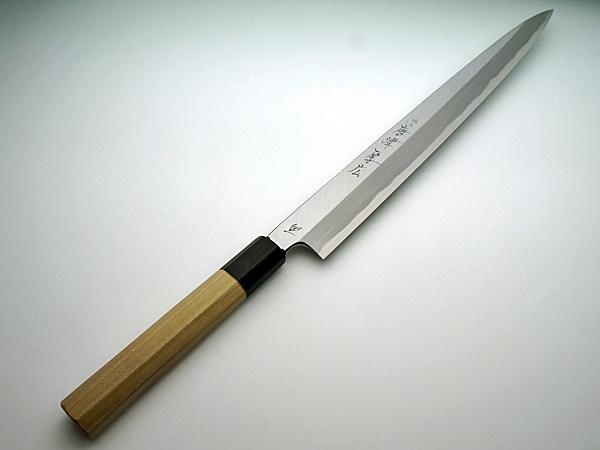
Yanagiba (柳刃 柳葉) knife, with a long blade for slicing sashimi in one motion
→ Buy Yanagiba (柳刃 柳葉) knives on Yahoo Auctions
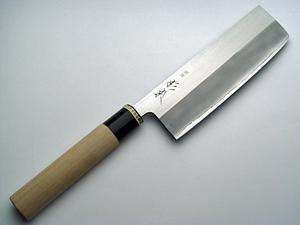
Nakiri (菜切) knife, rectangular shape, for slicing vegetables
→ Buy Nakiri (菜切) knives on Yahoo Auctions
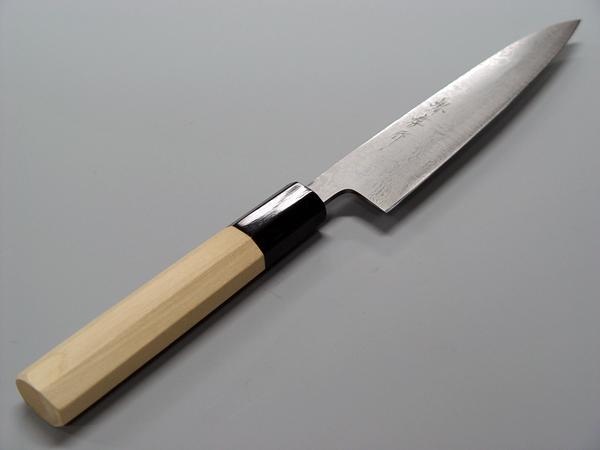
Petty (ぺティ) knife, a small knife with a short blade, equivalent to a paring knife
→ Buy Petty (ぺティ) knives on Yahoo Auctions
Also check our article How to buy from Japanese Yahoo Auctions Japan from abroad.
4. Because it's expensive but worth it
Let's say it right away; a Japanese knife is expensive, usually between 100 and 400 dollars, sometimes much more. Hence, the interest to buy them in Japan, in specialized stores, or directly at the source where they were made.
The price of knives depends mainly on their size, the type of steel used, the quality of the handle, and the time spent forging it. Each knife requires long hours of manual work at the forge before being assembled and finished. Given the work involved, the price is entirely justified.
5. Because it is better to have the original than the imitations
It is not always easy to find your way around because the market is flooded with pseudo-Japanese knives made in China. Cheap, these copies are not interesting: molded blade and not forged, stainless-steel blade not very short, low-end handle and plastic ring. Only the general shape is identical. Several labels guarantee the authenticity of forged knives made in Japan:
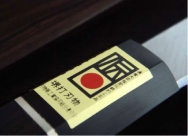
This label indicates that the knife has been hand forged in Japan by a qualified craftsman.
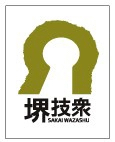
This label indicates that the blade has been made in Sakai in a recognized forge.
6. Because it needs to be pampered
A Japanese knife requires some maintenance, but nothing too complicated. You have to take care of the following points.
- After using it, you must clean and dry it quickly to avoid rust stains. Because carbon blades have a particularity: they are not "stainless." Small rust spots will appear if water is left on them for a long time. Of course, you can put them underwater when you use them without any problem; it's only during storage that the blade must be dry. If these stains appear, don't panic, there are some kinds of gum to make them disappear, and you can always restore them yourself.
- For the most careful, you can pass it with a cloth soaked in a special oil, Tsubiki, which is, in fact, the oil of Camelia.
- Sharpen it from time to time when you think it has lost its sharpness.
- And of course, store it in its Saya and keep it out of reach of curious kids.
7. Because it is passed on from generation to generation
Even if rusty, poorly maintained, or chipped, a Japanese knife can always be repaired and refurbished. It is an indestructible object that will accompany you for life and be passed on from generation to generation. In short, it is not just another trinket in your kitchen; it is an object with a soul!
Where to buy your Japanese knife?
Of course, the best way is to be directly in Japan and to shop directly from one of the thousand shops here. But that sounds difficult in those pandemic times so for sure you can get a knife online.
Here are some of the famous Japanese brands you can check:
Tojiro (藤次郎): http://www.tojiro-japan.com/
Yoshikin: https://www.yoshikin.co.jp/
Masamoto (正本): http://www.tukijimasamoto.co.jp/
Shun (旬): http://www.kai-group.com/products/special/hocho/products/shun/
How to buy original Japanese knives from these websites from abroad
We can help you purchase all you need from Japan and send it directly to you.
→ Check out here how it works